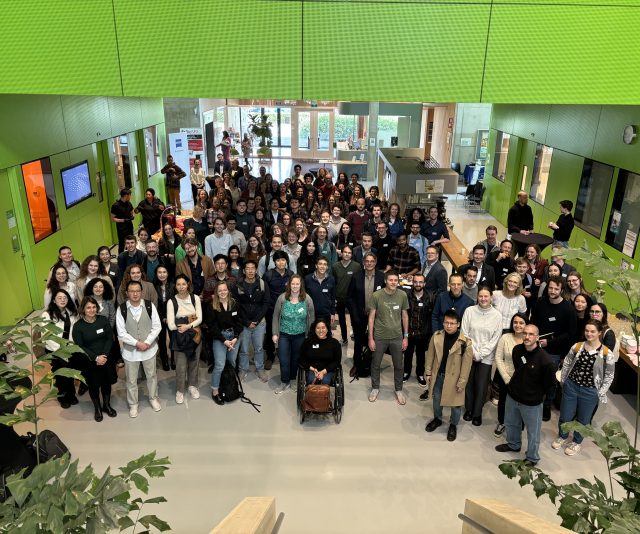

Read the 75 years AMOLF magazine online!
This edition of AMOLF NEWS is a special publication marking AMOLF’s 75th anniversary. It is a one-time issue. Read the magazine to learn more about 75 years of magical times at AMOLF.
To stay updated, sign up for the AMOLF digital newsletter.
Research fields
Using the tools of physics and design principles, AMOLF researchers study complex matter, such as light at the nanoscale, living matter, designer matter and nanoscale solar cells. These insights open up opportunities to create new functional materials and to find solutions to societal challenges.

Highlight
Light stands still in a deformed crystal
AMOLF researchers, in collaboration with Delft University of Technology, succeeded to bring light waves to a halt by deforming the two-dimensional photonic crystal that contains them. The researchers showed that even a subtle deformation can have a substantial effect on photons in the crystal.




